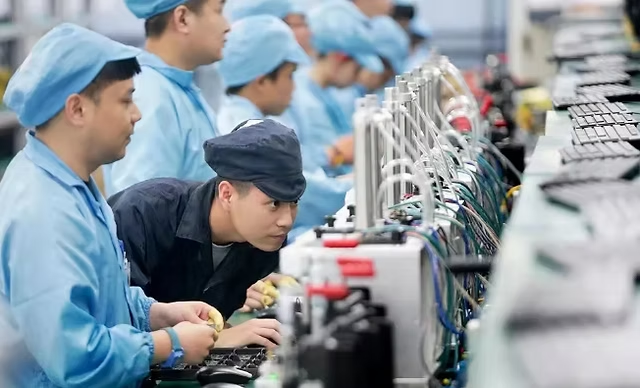Staff Reporter
Vietnam’s exports to the United States accounted for 30% of the country’s gross domestic product (GDP) last year, marking the highest percentage among America’s leading trade partners, according to a recent Reuters analysis of public data.
This heavy reliance on U.S. trade places Vietnam in a precarious position, particularly as it faces potential reciprocal tariffs.
Since the onset of the trade war between the U.S. and China initiated by the Trump administration in 2018, Vietnam has seen a significant influx of foreign investment.
Multinational corporations have shifted manufacturing operations from China to Vietnam to sidestep U.S. tariffs, transforming the Southeast Asian nation into a key player in global supply chains.
Major companies, including South Korea’s Samsung Electronics and Taiwan’s Foxconn, have established substantial operations in Vietnam. Additionally, American giants like Apple, Intel, and Nike have increasingly turned to Vietnam as a vital production hub for goods destined for the U.S. market.
The surge in manufacturing investment has positioned Vietnam as a pivotal node in global supply chains, significantly enhancing its economic relationship with the United States.
Last year, Vietnam’s goods exports to the U.S. reached an impressive $142.4 billion, making it the sixth-largest exporter to the U.S., trailing only Mexico, China, Canada, Germany, and Japan, according to United Nations commodity trade statistics.
These shipments accounted for roughly 30% of Vietnam’s GDP, estimated at $468 billion by the International Monetary Fund (IMF), representing the highest percentage among all U.S. trading partners. In contrast, China’s exports to the U.S. constitute only 2.5% of its GDP, while Japan’s account for 3.7%.
Vietnam’s thriving export sector, coupled with relatively low imports from the U.S., positioned it as the fourth-largest U.S. trading partner by trade surplus last year, surpassed only by China, the European Union, and Mexico, according to U.S. trade data.

